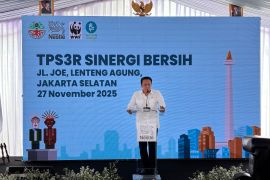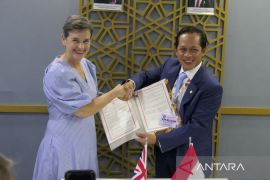To obtain data that describes the overall situation in Indonesia, support is needed from regional governments in the form of waste sampling, the ministry's Environmental Impact Control official, Arum Prajanti, said at a workshop on controlling coastal/marine pollution and damage on Thursday.
"We should do it together because if everything is left to the central government, we certainly will not be able to cover all," she added.
Marine waste monitoring involves collecting samples of several types, namely micro-debris (measuring less than 0.5 centimeters), meso-debris (measuring 0.5 to 2.5 cm), macro-debris (measuring 2.5 cm to 1 meter), and mega-debris (measuring more than 1 m).
She informed that while monitoring for macro- and medium-sized debris has been carried out in 23 provinces, debris collection has been conducted at only two beaches. As a result, efforts to get a bigger picture of the condition of marine waste in those provinces have failed.
"Thus, if regional governments also carry out monitoring, the data will be more comprehensive and representative," she said.
Prajanti explained that most marine debris is sourced from land, either from dumping near the coast or being carried to the river mouth. It could also be a result of unprocessed urban waste and waste generated from tourism activities around the coast.
Meanwhile, debris from the sea mostly comes from fishing activities, cargo ships, and offshore oil and gas platforms.
"This is why we once proposed to install garbage nets at river mouths," she said.
Related news: Indonesia to end plastic waste imports by 2025: minister
Related news: Nurrofiq seeks solutions to Jakarta's mounting waste problem
Related news: Indonesia's Environment Ministry plans to end waste imports this year
Translator: Prisca Triferna, Raka Adji
Editor: Azis Kurmala
Copyright © ANTARA 2024












